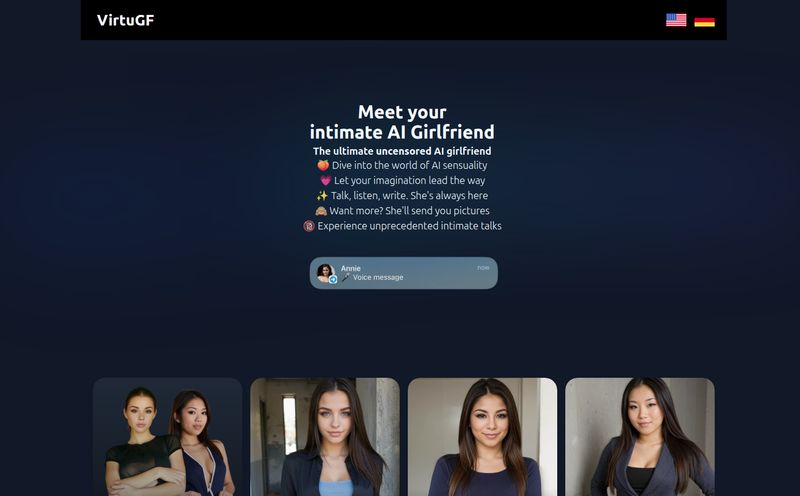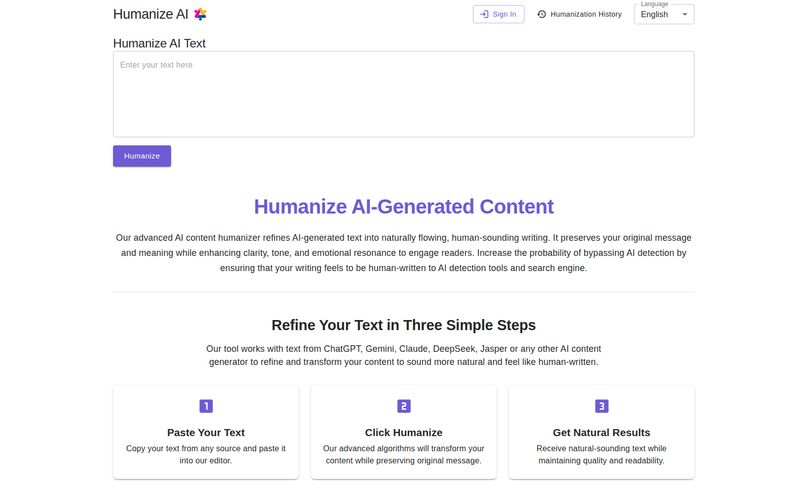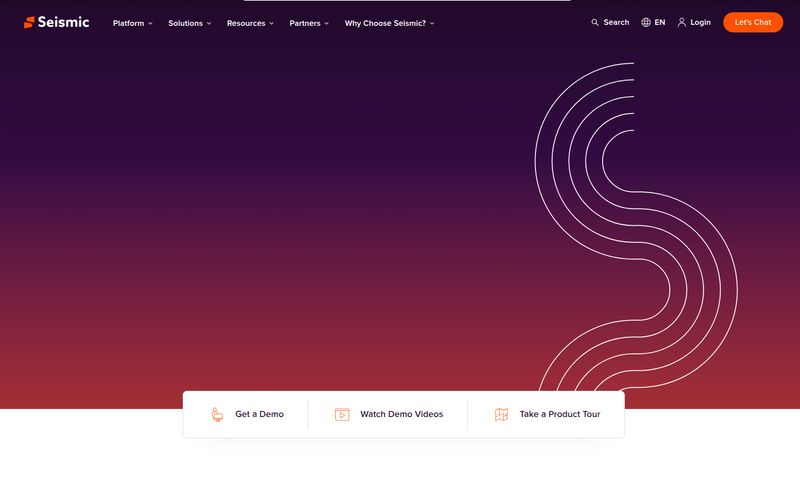My Brain Has Too Many Tabs Open, and I Think I Found a Solution
If you're anything like me, your digital life is a controlled (or maybe not-so-controlled) chaos. My browser currently has 37 tabs open. My desktop is a minefield of screenshots named `Screen Shot 2024-10-26 at 11.41.05 AM`. My notes are scattered across three different apps, a physical notebook, and several post-it notes that have lost their stick. It’s the curse of the curious mind, especially in the SEO and content world where you're constantly researching, connecting ideas, and chasing down digital rabbit holes.
For years, I've been on a quest for the perfect system. I’ve tried the all-in-one Goliaths like Notion. I've flirted with the beautiful simplicity of dedicated mind-mappers. I even went deep into the text-based world of Obsidian, feeling like a real hacker linking notes in a markdown vault. They're all great, but none of them quite scratched the specific itch I had: how to visually connect all the random bits of information I collect.
Then a little tool called Emberly popped onto my radar. It promised to combine mind-mapping with note-taking, and it threw in some AI for good measure. Skeptical? Always. Intrigued? Absolutely. So I jumped in.
What is Emberly, Anyway? It’s a Corkboard for Your Brain
Forget filing cabinets. Filing cabinets are linear. You put a document in a folder, which goes in a drawer, which goes in the cabinet. It's rigid. Emberly is less like a filing cabinet and more like a detective’s corkboard in an old-school noir film. It’s a free-form space where you pin up your clues—a bookmark, a random thought, a PDF, an image—and then connect them with pieces of red string to see the bigger picture.
At its heart, Emberly is a visual knowledge base. Each piece of information, or “node,” can contain notes, files, and links. You can then link these nodes to each other, creating a sprawling, interconnected web of your own thoughts and research. It's designed to help you master information overload by, well, organizing the overload instead of just hiding it in folders.

Visit Emberly
This approach immediately felt different. Instead of writing a linear document about a new SEO strategy, I could create a central node for “Q4 Content Strategy” and branch off with nodes for keyword research, competitor articles, internal linking ideas, and relevant Google patents. Each of those nodes could hold my actual notes and links. It’s a subtle shift, but it makes a huge difference in how you process information.
The Features That Actually Change Your Workflow
A pretty interface is nice, but as a grizzled veteran of the SaaS wars, I know it's the features that determine if a tool sticks around or gets uninstalled after a week. Emberly has a few things that really stand out.
Mind Maps That Are More Than Just Diagrams
This is the core of it all. Unlike traditional mind-mapping software where the bubbles are just text labels, Emberly's nodes are containers. You can dump a whole article's worth of notes, a link to a source, and a few key images all into one spot. And with bi-directional links, it starts to feel a bit like your own personal Wikipedia. Clicking on a linked node takes you there, and it shows you what other nodes link back to it. For anyone who's ever heard of the Zettelkasten method of note-taking, this will feel very familiar, but with a much more visual and intuitive wrapper.
The AI Assistant That's Genuinely Helpful
Look, “AI-powered” is the new “gluten-free.” It's slapped on everything. But Emberly’s AI features feel thoughtful. The two that caught my eye were the automatic quizzes and the discussion simulator. You can feed it your notes on a topic, and it will generate a quiz to test your knowledge. I can see this being an absolute game-changer for students. The discussion simulator lets you “talk” to the AI about your notes, helping you find weak spots in your arguments or brainstorm new angles. It’s like having a very patient, very knowledgeable sparring partner on call 24/7.
Collaboration for People Who Think in Pictures
You can also share your maps and edit them with others. I roped in a colleague for a small project, and it was fascinating. Instead of a long, confusing Google Doc, we built out a project map together. It was faster, clearer, and frankly, a lot more fun. It’s a great way to get everyone on the same page, literally.
My Honest Take: The Good, The Bad, and The Quirky
No tool is perfect. After spending some real time with Emberly, here's my unfiltered opinion.
The good stuff is really good. The visual organization just clicks for a certain type of brain. If you're a visual thinker, it feels like coming home. The browser plugin is fantastic; I can finally save an interesting article and immediately place it into a relevant mind map instead of letting it die in a bookmark folder. And the AI learning tools are more than just a gimmick.
On the other hand, the free plan is definitely a teaser. You get five maps and a 70-topic limit per map. You’ll hit that limit pretty fast on any serious project. This isn't a complaint, really—devs need to eat—but it's something to be aware of. You'll know very quickly if you need to upgrade. Also, while its fantastic for brainstorming and knowledge management, its not going to replace a powerhouse like Notion for things like complex databases or project management tables. It’s a specialist, not a generalist.
So, Who is This Really For?
I don't believe in one-size-fits-all tools. Here’s who I think would fall in love with Emberly:
- Students and Researchers: This is a no-brainer. Organizing research, studying for exams with the AI quiz, and visually mapping out complex theories seems like its primary calling.
- Content Creators and SEOs: Oh yeah. This is us. Planning content clusters, mapping topic authority, storing swipe files, and tracing the connections between different keywords and search intents. It’s a visual SERP analysis and content strategy tool rolled into one.
- Authors and World-Builders: Anyone building a complex narrative could use this to map out plot points, character relationships, and timelines.
- The Lifelong Learner: If you're just someone who loves learning new things and wants a better way to retain and connect information from books, articles, and courses, this is for you.
Let's Talk Money: Emberly Pricing
The pricing structure is pretty straightforward, which I appreciate. No confusing credit systems or per-user shenanigans for solo plans.
| Plan | Price | My Two Cents |
|---|---|---|
| Basic | $0/month | The “try before you buy” tier. Gives you a great feel for the platform, but you’ll hit the map and topic limits if you use it seriously. |
| Plus | $5/month | This is the sweet spot. You get way more maps (26), unlimited topics, more file storage, and dark mode. For most individuals, this is the one. |
| Plus Ultra | $10/month | For the true power users. Unlimited everything, including maps and AI quizzes. If Emberly becomes the center of your workflow, this is a worthy investment. |
Note: Prices are based on information available at the time of writing. Always check the official Emberly pricing page for the most current details.
Final Thoughts: Is Emberly Worth It?
After a few weeks of use, Emberly has earned a permanent spot in my toolkit. It hasn't replaced everything else I use, but it has solved a very specific, very annoying problem: how to make sense of the beautiful chaos of my research. It’s a thinking tool more than just a storage tool.
If you feel like you're drowning in information and your current system of folders and lists isn't cutting it, I genuinely think you should give Emberly a try. It might just be the corkboard your brain has been looking for. What have you got to lose, other than a few dozen browser tabs?
Frequently Asked Questions
- Can Emberly completely replace a tool like Notion or Evernote?
- For some people, maybe. But for most, probably not. Emberly is a specialist in visual organization and learning. Notion is a much broader, all-in-one workspace with powerful databases and team management features. Emberly is a perfect companion to these tools, acting as your primary brainstorming and research hub.
- Is the Emberly AI just another GPT wrapper?
- While it's based on large language models, its application is very specific. The AI features are tailored for learning and synthesis—like creating quizzes from your notes or helping you debate a topic. It's less about generic text generation and more about helping you interact with your own information.
- How hard is it to get started with Emberly?
- The basic learning curve is very gentle. You can be creating nodes and connecting them within minutes. It feels intuitive. Mastering all the nuances, like effective use of bi-directional links and the AI tools, will take a bit more time, but the barrier to entry is very low.
- Is my data safe with Emberly?
- Like any cloud-based service, this is a valid concern. Emberly states they use industry-standard security practices to protect user data. As always, for highly sensitive information, you should review their privacy policy and terms of service to ensure they meet your requirements.
- Can I use Emberly on my phone or tablet?
- Yes, Emberly is designed as a web app that is responsive to different screen sizes. While the experience is best on a larger screen (like a desktop or tablet) for navigating complex maps, you can definitely access and edit your notes on the go from a mobile browser.
Reference and Sources
- Emberly Official Website: https://ember.ly/
- Emberly Official Pricing Page: https://ember.ly/pricing
- An Introduction to the Zettelkasten Method by Ness Labs: https://nesslabs.com/zettelkasten-method
- Notion's Official Website: https://www.notion.so/



